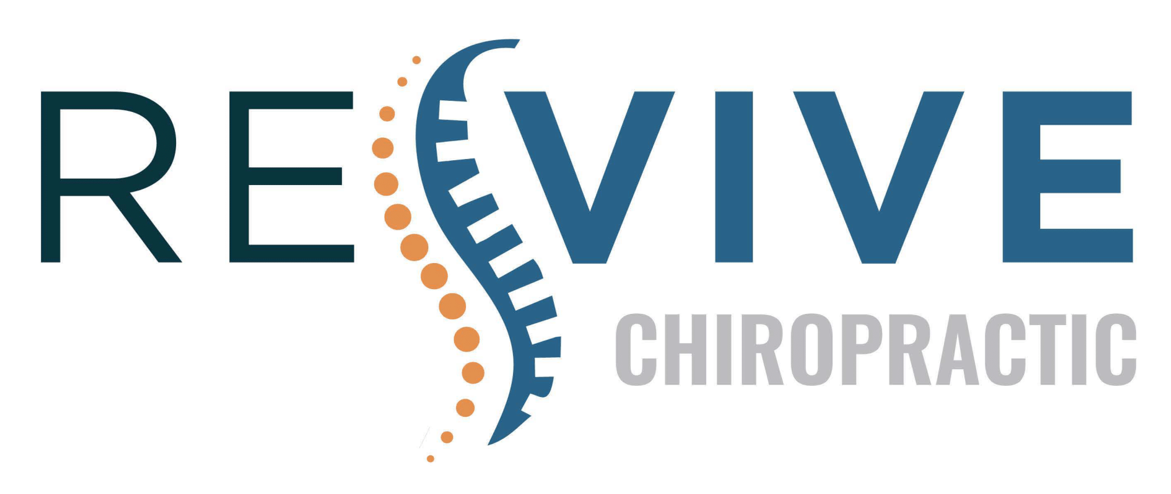You might think back pain is just a minor annoyance, but it can be a complex puzzle that affects your daily life more than you realize. From sudden jolts to persistent aches, the causes can vary widely and often intertwine with your lifestyle, posture, and even emotional health. Understanding these nuances is essential, yet many overlook them. What's really behind that discomfort? As we explore the layers of this issue, you may find surprising insights that could change how you approach your own back pain.
Understanding Back Pain
Back pain is a common issue that affects many people at some point in their lives. You might experience it as a dull ache, a sharp stab, or even a throbbing sensation. Understanding back pain is vital for managing it effectively. It can be localized to one area or radiate through various parts of your back, and it often impacts your daily activities, from bending over to tie your shoes to sitting comfortably at work.
When you think about back pain, remember that it can manifest in different ways. Acute pain might arise suddenly due to an injury, while chronic pain could develop gradually over time. You may find yourself asking questions about its origin and severity. Is it just a result of your daily routine, or could it be something more significant?
Recognizing the symptoms is essential. You should pay attention to how your pain affects your mobility and daily tasks. If it interferes with your sleep or prevents you from enjoying life, seeking professional advice is a wise step.
Your mental state can also play a role in your experience of back pain. Stress and anxiety can amplify your perception of pain, making it feel worse than it is. So, while you're focused on physical symptoms, don't overlook the emotional aspect.
Understanding back pain means acknowledging both its physical and psychological components. Ultimately, this knowledge empowers you to take proactive steps toward relief and recovery.
Common Causes Explained
When it comes to back pain, understanding common causes can make a big difference in how you manage it.
Poor posture, muscle strains, and age-related changes often play significant roles in your discomfort.
Let's explore how these factors contribute to the pain you might be feeling.
Poor Posture Effects
Poor posture can lead to a variety of issues beyond just discomfort; studies suggest that nearly 80% of adults experience some form of back pain related to their habits.
When you slouch or hunch over, you're not only straining your back but also misaligning your spine. This misalignment can create undue pressure on your discs and nerves, leading to pain that lingers.
You mightn't realize it, but poor posture can also affect your muscles. Over time, if you consistently lean to one side or round your shoulders, certain muscles become tight while others weaken. This imbalance can exacerbate your back pain and even lead to chronic conditions.
Additionally, poor posture can impact your breathing and digestion. When you're slumped, your diaphragm can't function effectively, making it harder to take deep breaths. This can result in decreased oxygen flow, which affects your overall energy levels.
Muscle Strain Origins
Muscle strains often stem from everyday activities that put undue stress on your body. You mightn't realize it, but simple tasks like lifting a heavy box, bending awkwardly, or even sitting for long periods can lead to muscle strain. These actions can stretch your muscles beyond their limits, resulting in tears or overstretching.
Moreover, improper techniques during exercise or sports can contribute greatly to muscle strains. If you're not warming up correctly or using the right form, you're at a higher risk of injuring yourself.
Even repetitive motions, like typing or gardening, can wear down your muscles over time, leading to strains. Additionally, sudden movements or twists can catch your muscles off guard, causing them to strain. You might notice this when you twist to reach something or change direction too quickly.
Stress and fatigue also play a role; when you're tired or mentally stressed, your body may not respond as well to physical demands. Recognizing the origins of muscle strains can help you adjust your activities and protect your back from unnecessary pain.
Taking preventative measures can make a big difference in how you feel day-to-day.
Age-Related Changes
As we age, our bodies naturally undergo changes that can contribute to back pain. One of the most common issues is the degeneration of spinal discs. These discs lose hydration and elasticity over time, leading to reduced cushioning between vertebrae. You may notice stiffness and discomfort as your spine becomes less flexible.
Additionally, your muscles and ligaments can weaken, which might make it harder for you to maintain proper posture. Poor posture can put extra stress on your spine, resulting in pain. Osteoarthritis is another age-related condition that can affect your back. This wear-and-tear arthritis can cause inflammation and pain in the joints of your spine.
You might also find that your body's natural height decreases with age, leading to a stooped posture that can exacerbate discomfort.
Finally, lifestyle factors, like decreased physical activity, can further contribute to back pain as your muscles become weak and less supportive.
Understanding these changes is key to addressing your back pain. Regular exercise, maintaining good posture, and staying active can help mitigate some of the discomfort associated with aging.
Symptoms to Look For
When you experience back pain, it's essential to pay attention to the types of pain you feel, whether it's sharp, dull, or throbbing.
Note how long the discomfort lasts and if it worsens over time.
Also, keep an eye out for any associated symptoms, like numbness or weakness, as these can indicate more serious issues.
Types of Pain
Recognizing the type of back pain you're experiencing is vital for effective treatment. Back pain can manifest in various ways, and identifying the symptoms can help you address the underlying issue.
First, you might experience sharp or stabbing pain, often associated with injuries or conditions like herniated discs. This type of pain can strike suddenly and may worsen with movement.
On the other hand, dull, aching pain usually develops gradually and may stem from muscle strain or poor posture.
You may also encounter radiating pain, which travels down your legs, often indicating nerve involvement, like sciatica. If you feel numbness or tingling along with the radiating pain, it's important to seek medical advice.
Another type to reflect on is chronic pain, lingering for months or even years. This persistent discomfort can stem from conditions like arthritis or degenerative disk disease, affecting your daily activities.
Lastly, pay attention to any pain that worsens with specific activities, as it may signal an underlying problem needing attention.
Understanding these types of pain will guide you in seeking the right treatment and relief.
Duration of Discomfort
Understanding the duration of your back pain can provide valuable insights into its potential causes and necessary treatments. If your discomfort lasts for a few days, it might be due to a muscle strain or a minor injury. In such cases, rest, ice, and over-the-counter pain relievers can often help.
However, if your pain persists beyond a week, it may signal a more serious issue. When your back pain lingers for several weeks, it's important to pay attention. This kind of chronic pain could indicate conditions like herniated discs or degenerative issues. It's vital not to ignore these signs, as they may require professional evaluation and treatment.
On the flip side, if your pain comes and goes, it could be linked to certain activities or postures. Reflect on your daily routine—are you sitting for long hours, or lifting heavy objects improperly? Identifying these triggers can help you manage your pain effectively.
Ultimately, being aware of how long you've been experiencing back pain can guide you on whether to seek medical advice or implement self-care strategies. Don't hesitate to consult a healthcare professional if you're unsure about your symptoms.
Associated Symptoms
Back pain often comes with a variety of associated symptoms that can help you identify its underlying cause. For instance, you might experience stiffness, which can limit your mobility and affect your daily activities.
If you notice numbness or tingling in your legs or arms, this could indicate nerve involvement, potentially signaling a more serious issue like a herniated disc.
You may also feel weakness in your legs, making it difficult to stand or walk. This symptom can be alarming, so it's vital to pay attention.
Additionally, if your back pain is accompanied by fever, unexplained weight loss, or bowel and bladder issues, you should seek medical attention immediately. These symptoms can suggest infections or other significant conditions that require prompt care.
Moreover, emotional symptoms like anxiety or depression often accompany chronic back pain. If you find yourself feeling overwhelmed or stressed, it can exacerbate your physical discomfort.
Recognizing these associated symptoms can help you communicate effectively with healthcare providers, leading to a more accurate diagnosis and appropriate treatment plan.
Don't ignore what your body is telling you; understanding these clues is essential to finding relief.
Diagnosis Methods
Diagnosing back pain involves a combination of patient history, physical examinations, and imaging tests. When you visit a healthcare provider, they'll start by asking about your symptoms. Be prepared to discuss when your pain started, its intensity, and any activities that seem to trigger or worsen it. This information helps your provider understand the potential causes of your pain.
Next, they'll conduct a physical examination. They'll check your posture, flexibility, and range of motion. You might be asked to perform certain movements to identify any limitations or discomfort. Your provider may also assess your reflexes and muscle strength, which can reveal underlying issues affecting your nerves or spinal cord.
If your provider suspects a more serious condition, they might recommend imaging tests. X-rays can help identify fractures or structural issues, while MRI and CT scans offer a detailed view of soft tissues, such as discs and ligaments. These tests can reveal herniated discs, spinal stenosis, or other conditions that mightn't be visible through a physical exam alone.
In some cases, blood tests may be necessary to rule out infections or inflammatory conditions. Your provider will consider all this information to determine the most likely cause of your back pain.
Treatment Options Available
Once your healthcare provider has identified the underlying cause of your back pain, it's time to explore the available treatment options. Depending on the diagnosis, you might start with conservative approaches. Over-the-counter pain relievers like ibuprofen or acetaminophen can provide immediate relief.
Applying heat or ice to the affected area can also help alleviate discomfort.
If your pain persists, physical therapy could be a game changer. A physical therapist will guide you through exercises tailored to strengthen your back and improve flexibility. They'll teach you proper body mechanics to prevent future injuries.
You might also consider chiropractic care, where a chiropractor can manipulate your spine to enhance mobility and reduce pain.
For more severe cases, your doctor may suggest prescription medications or corticosteroid injections to target inflammation. These treatments can help manage pain while you work on rehabilitation.
In certain situations, alternative therapies such as acupuncture or massage can offer relief and promote relaxation. Some patients find that incorporating mindfulness techniques, like yoga or meditation, helps manage their pain by reducing stress.
If conservative treatments don't yield results, your provider may recommend surgical options. Procedures can range from minimally invasive techniques to more extensive surgeries, depending on the specific issue.
Ultimately, finding the right treatment plan requires open communication with your healthcare provider. Together, you'll tailor a strategy that fits your needs, lifestyle, and goals, ensuring you can move toward a pain-free life.
Preventive Measures
Taking proactive steps can considerably reduce your risk of developing back pain. One of the most effective ways to prevent back pain is by maintaining a strong core. Engaging in regular core-strengthening exercises, like planks or bridges, helps support your spine and keeps your posture aligned.
Posture plays an essential role in back health. When you're sitting or standing, make sure your back is straight, shoulders are back, and your feet are flat on the ground. If you spend long hours at a desk, invest in an ergonomic chair and take frequent breaks to stretch and walk around. This helps alleviate tension and keeps your muscles flexible.
Another key preventive measure is to stay active. Regular physical activity, such as walking, swimming, or yoga, strengthens your back muscles and improves overall flexibility. Aim for at least 150 minutes of moderate aerobic activity each week.
Watch your lifting techniques, too. Always bend at your knees and keep your back straight when lifting heavy objects. If something feels too heavy, don't hesitate to ask for help.
Lastly, pay attention to your weight. Maintaining a healthy weight reduces stress on your back and joints. A balanced diet combined with regular exercise can help you achieve and maintain your ideal weight.
When to Seek Help
Knowing when to seek help for back pain can be vital for your recovery. If you've been experiencing persistent pain for more than a few weeks, it's time to consult a healthcare professional. Ignoring ongoing discomfort can lead to more serious issues down the line.
Pay attention to any accompanying symptoms, like numbness or tingling in your legs, which might indicate nerve involvement. If you notice weakness in your legs or difficulty walking, don't hesitate to reach out for help. These signs can suggest that your condition requires immediate attention.
Additionally, if your back pain follows a serious injury or accident, seeking medical advice is important. Even if the pain seems manageable, it's better to get checked out to rule out any underlying issues.
You should also consider seeking help if your pain interferes with daily activities, like work or hobbies. Quality of life matters, and you shouldn't have to suffer in silence.
Finally, if your pain is accompanied by fever, unexplained weight loss, or bowel and bladder control issues, seek medical attention right away. These symptoms can indicate more severe conditions that need urgent care.
Taking action when you notice these warning signs can make a significant difference in your recovery process. Don't wait until the pain becomes unbearable—getting the right help early can lead to better outcomes. Your back deserves the attention it needs!
Conclusion
To sum up, back pain can be a frustrating and complex issue, but you don't have to face it alone. By understanding the causes, recognizing symptoms, and exploring treatment options, you can take control of your health. Remember to prioritize preventive measures in your daily routine and seek help when needed. With the right approach, you can crack the mystery of back pain and move towards a more comfortable, active life.



